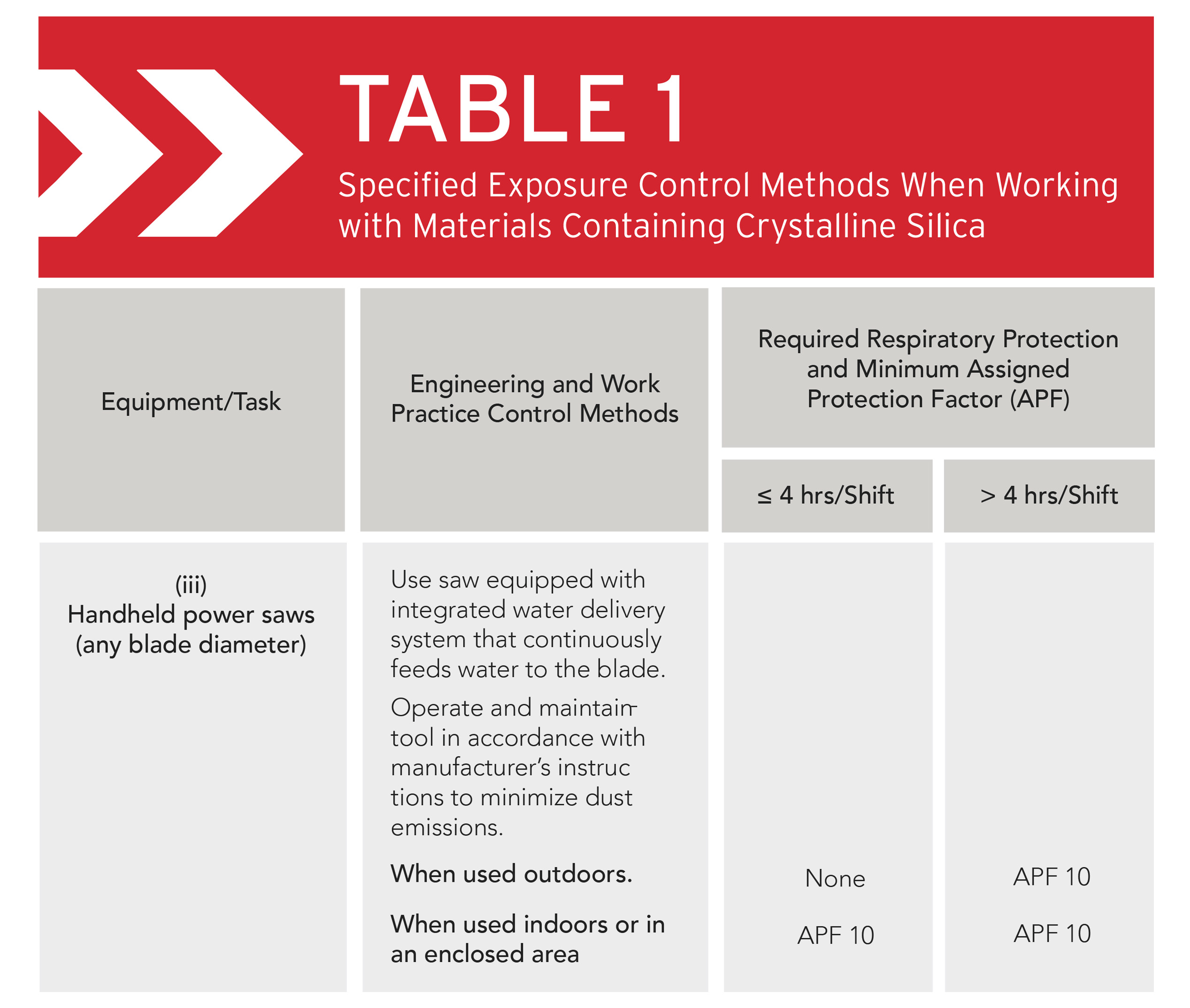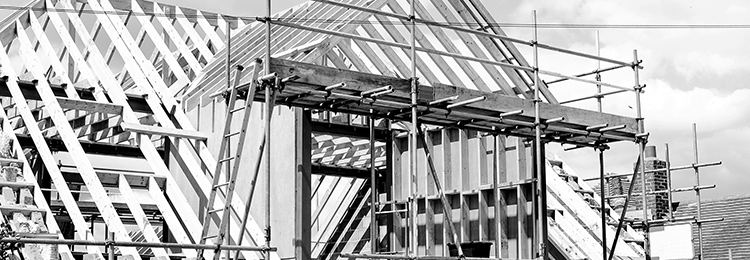Crystalline silica, commonly referred to as quartz, is a basic component of soil, sand, granite, and many other minerals. While it may sound harmless, it can create serious health risks. When construction workers chip, cut, drill, or grind objects that contain silica, such as brick, concrete, or HardiePlank, the particles released may become respirable.
Whenever your team is in an environment where dust is prevalent, workers are at risk of inhaling crystalline silica. High-risk trades include:
- masons
- drywall finishers
- remodelers (during demolition)
- countertop manufacturers
- heavy equipment operators
- concrete finishers
- HardiePlank installers
On March 24, 2016, OSHA announced its final rule on Occupational Exposure to Respirable Crystalline Silica. Let’s discuss the ruling, as well as the Table 1 standard.
OSHA’s New Rule
The compliance date for the new rule for those in the construction industry was September 23, 2017. The rule reduces the permissible exposure limit (PEL) for crystalline silica from 250 to 50 micrograms per cubic meter of air (μg/m3), averaged over an eight-hour shift.
Employers must use engineering controls during the course of daily operations in order to comply with the new rule. These controls include wetting down work operations, using the water flow rate recommended by the manufacturer for a tool with water controls, or using local exhaust ventilation (such as vacuums) to keep silica-containing dust out of the air and out of workers’ lungs. Another control that may work well is enclosing an operation through a method known as “process isolation.”
Respirators are allowed as the sole type of protection only when engineering and work practice controls cannot maintain exposures at or below the PEL or when other methods are infeasible.
We will discuss controls more thoroughly in part two of this series.
Table 1
For reference, the standard includes Table 1, a list of common construction tasks along with exposure control methods and work practices that can be used to comply with the requirements of the standard.
“With Table 1, employers know exactly what they need to do to limit worker exposures to silica,” Sean Purcell, risk management expert says. “The dust control measures listed in the table include methods known to be effective, like using water to keep dust from getting into the air or using ventilation to capture dust. In some operations, respirators may also be needed.”
Employers who follow Table 1 correctly are not required to measure workers’ exposure to silica and are not subject to the PEL.
Example: Handheld Power Saws
Let’s take a look at an example using Table 1. For workers using handheld power saws, the following information is provided:

The chart explains that when workers are using handheld power saws to cut silica-containing materials, they can use a saw with a built-in system that applies water to the saw blade. The water limits the amount of respirable crystalline silica that gets into the air.
Additionally, if a worker uses the saw outdoors for four hours or less per day, no respirator would be needed. If a worker uses the saw for more than four hours per day outdoors or any time indoors, he or she would need to use a respirator with an assigned protection factor (APF) of at least 10. In this case, a NIOSH-certified filtering facepiece respirator that covers the nose and mouth (sometimes referred to as a dust mask) could be used. If a worker needs to use a respirator on 30 or more days a year, he or she would need to be offered a medical exam.
Additional Tools
In addition to this overview, Builders Mutual has compiled the following list of free resources to help educate our policyholders about the final rule on Occupational Exposure to Respirable Crystalline Silica for construction, Table 1, and ways to comply.
- NAHB Silica in Construction Toolkit
- OSHA Fact Sheet
- OSHA Silica Site: Control Measures for Specific Operations
- OSHA Small Entity Compliance Guide
- CPWR Silica Safety Website
Up next, read about implementing approved methods for controlling respiratory hazards on the job-site here.
Resources
- “Do You Have Questions About Disposable Dust Masks? We Have Answers!”EHS Today. October 12, 2017.
- “Respiratory Protection Selection Made Easy (Or At Least, Less Confusing)” EHS Today. October 12, 2017.
- “OHSA’s New Silica Rule – Overview and Resources”Builders Mutual. 2017.
- “Silica in Construction Toolkit” National Association of Home Builders. 2017.
- “OSHA Crystalline Silica Rule: Construction” OSHA. 2017.




 Find an
Find an